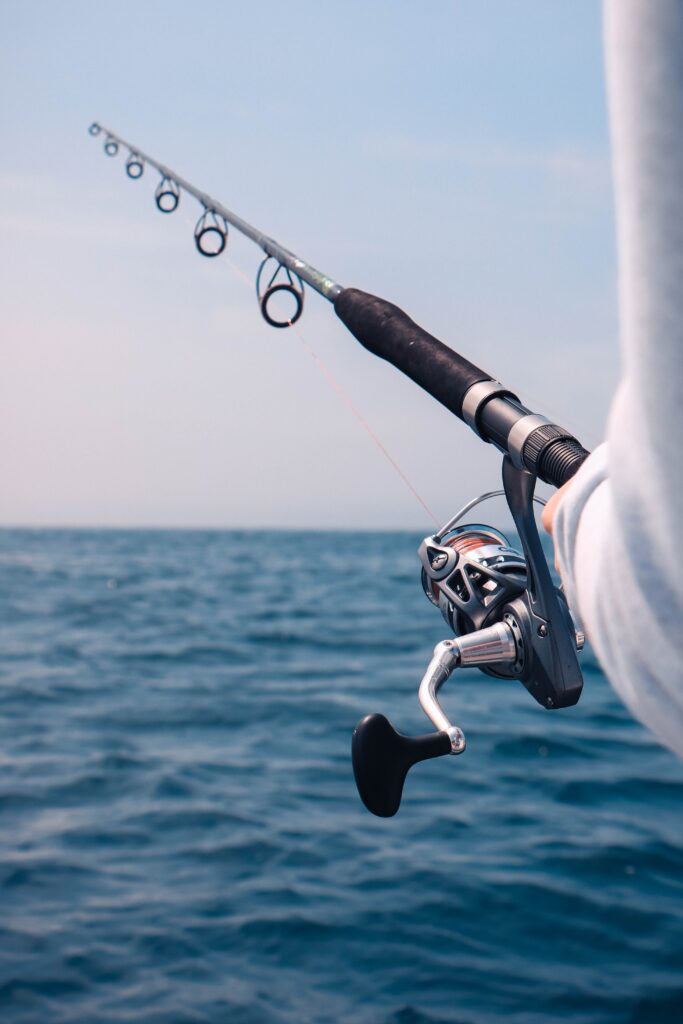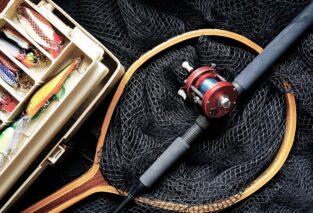Are you a beginner angler looking to start fishing? Look no further! In this article, we will guide you on how to choose and maintain your first fishing reel. Whether you are fishing in freshwater or saltwater, choosing the right reel is essential for a successful fishing experience. We will provide you with the necessary information and tips to help you make an informed decision when selecting your first fishing reel. Additionally, we will share simple maintenance techniques to ensure your reel stays in optimal condition for years to come. Get ready to embark on your fishing journey with confidence and enjoy the thrill of reeling in your first catch!

Choosing the Right Fishing Reel
Understanding Different Types of Fishing Reels
When choosing a fishing reel, it’s important to understand the different types available. The most common types are spin casting reels, spinning reels, baitcasting reels, and fly fishing reels. Each type has its own advantages and disadvantages, so it’s important to consider your fishing style and target fish before making a decision.
Consider Your Fishing Style and Target Fish
Your fishing style and the type of fish you plan to catch will greatly impact the type of reel you should choose. Spin casting reels are great for beginners or casual anglers who prefer lighter tackle. Spinning reels are versatile and are suitable for a wide range of fishing styles. Baitcasting reels are ideal for experienced anglers who want more control over their casts. Fly fishing reels are specifically designed for fly fishing techniques and are essential for this style of fishing.
Evaluate the Reel’s Material and Construction
The material and construction of a fishing reel are important factors to consider, as they can greatly affect its durability and performance. Look for reels that are made from high-quality materials such as aluminum or graphite. These materials are lightweight yet strong, making them ideal for withstanding the rigors of fishing. Additionally, consider the construction of the reel, paying attention to the design and overall build quality.
Determine the Reel Size and Line Capacity
The size of the fishing reel you choose should correspond to the type of fishing you will be doing. Larger reels are typically used for saltwater fishing or targeting larger fish species, while smaller reels are better suited for freshwater or lighter tackle applications. Additionally, consider the line capacity of the reel, as this will determine how much fishing line it can hold. Make sure the reel’s line capacity is suitable for the type of fishing you plan to do.
Check the Gear Ratio and Drag System
To ensure a smooth fishing experience, pay attention to the gear ratio and drag system of the reel. The gear ratio refers to the number of times the spool rotates for each turn of the handle. A higher gear ratio means faster line retrieval, which can be beneficial when you need to quickly bring in your catch. The drag system, on the other hand, controls the amount of resistance on the fishing line when a fish pulls. Look for reels with a smooth and reliable drag system that can handle the weight and fight of your target fish.
Examine the Fishing Reel’s Bearings
Bearings are an important component of a fishing reel, as they provide smoothness and stability during casting and retrieval. Look for reels with a higher number of bearings, as this usually indicates better performance. However, keep in mind that the quality of the bearings is just as important as the quantity. Look for reels with high-quality, corrosion-resistant bearings for optimal performance.
Consider the Retrieval System and Handle Style
The retrieval system and handle style of a fishing reel can greatly impact your fishing experience. Some reels have a single-handle design, while others have a double-handle design. Consider your personal preferences and comfort when choosing between the two. Additionally, consider the retrieval system of the reel. Some reels have a front drag system, while others have a rear drag system. Choose the system that aligns with your fishing style and preferences.
Assess the Reel’s Weight and Balance
The weight and balance of a fishing reel are important factors to consider, especially if you plan to fish for extended periods. A heavy reel can cause fatigue and discomfort during long fishing trips, so it’s important to choose a reel that is lightweight yet durable. Additionally, pay attention to the balance of the reel. A well-balanced reel will feel comfortable and natural in your hand, allowing for more precise and controlled casts.
Set a Budget for Your First Fishing Reel
Before shopping for a fishing reel, it’s important to set a budget. Fishing reels come in a wide range of prices, so determine how much you are willing to spend and stick to it. While it may be tempting to purchase the most expensive reel on the market, keep in mind that there are high-quality options available at affordable prices. Do your research, compare prices, and choose a reel that fits within your budget without compromising on quality.
Seek Recommendations and Reviews
When choosing a fishing reel, it’s always beneficial to seek recommendations and read reviews from experienced anglers. Ask friends, family, or fellow anglers for their recommendations based on their own experiences. Additionally, browse online forums, fishing websites, and product reviews to gather more information about specific reels you are considering. This will help you make an informed decision and choose a reel that is highly regarded by other anglers.
Proper Maintenance of Your Fishing Reel
Regular Cleaning and Lubrication
Proper maintenance of your fishing reel is crucial in extending its lifespan and ensuring optimal performance. Regularly clean your reel after each fishing trip using a mild soap and water solution. Remove any dirt, debris, or salt buildup to prevent corrosion. Once clean, lubricate the moving parts of the reel with a high-quality fishing reel oil or grease. This will keep the reel operating smoothly and prevent unnecessary wear and tear.
Store the Reel in a Dry and Safe Place
When not in use, it’s important to store your fishing reel in a dry and safe place. Moisture and humidity can cause damage to the reel’s internal components, leading to corrosion and decreased performance. Store your reel in a cool, dry place such as a tackle box or storage bag. Additionally, consider placing a silica gel packet in the storage container to absorb any excess moisture and further protect the reel.
Check for Signs of Damage or Wear
Regularly inspect your fishing reel for any signs of damage or wear. Check for cracks, bent parts, or loose screws that may affect the reel’s functionality. If any issues are found, address them promptly to prevent further damage. Replace any damaged or worn-out parts to keep the reel in working condition. It’s also important to periodically check the reel’s handles, gears, and spool to ensure they are functioning properly and do not require any adjustments or repairs.
Replace Fishing Line Regularly
The fishing line is an essential component of your reel and should be regularly replaced to maintain optimal performance. Over time, fishing line can become worn, frayed, or damaged, reducing its strength and casting ability. Replace the fishing line at least once a season or more frequently if it shows signs of wear. This will ensure that your line remains strong and reliable, increasing your chances of landing a successful catch.
Inspect and Clean the Reel’s Drag System
The drag system of a fishing reel is crucial in controlling the amount of resistance on the fishing line. Regularly inspect and clean the drag system to ensure it operates smoothly and efficiently. Remove any dirt, debris, or excess grease from the drag washers using a cloth or cotton swab. Lubricate the drag system with a specialized drag grease to maintain its performance. A well-maintained drag system will provide consistent and reliable resistance, allowing for smooth and controlled plays.
Handle the Reel Properly during Use
Proper handling of your fishing reel during use is essential in preventing damage and maintaining its longevity. Avoid gripping the reel’s handle too tightly or using excessive force when casting or retrieving. This can put unnecessary strain on the reel and lead to premature wear and tear. Instead, hold the reel comfortably and use smooth, controlled motions while fishing. This will not only protect your reel but also improve your casting accuracy and overall fishing experience.
Avoid Exposing the Reel to Harsh Elements
To protect your fishing reel from unnecessary damage, it’s important to avoid exposing it to harsh elements. Extreme temperatures, excessive sunlight, and saltwater can all cause corrosion and deteriorate the reel’s components. When fishing in hot weather, provide shade for your reel and avoid leaving it exposed to direct sunlight for extended periods. When fishing in saltwater, rinse the reel with fresh water immediately after use to remove any salt residue.
Seek Professional Servicing and Repairs
If you encounter any issues with your fishing reel that you are unable to address yourself, it’s best to seek professional servicing and repairs. Trained technicians can diagnose and fix any problems, ensuring that your reel is in optimal condition. Additionally, professional servicing usually involves a thorough cleaning and lubrication of the reel, which can help prolong its lifespan and maintain its performance.
Keep a Spare Parts Kit and Tools
Having a spare parts kit and the necessary tools on hand can be extremely helpful in emergency situations or when minor repairs are needed. Keep a small kit containing spare screws, washers, and other commonly used parts in your tackle box or fishing bag. Additionally, invest in a set of basic tools such as screwdrivers, pliers, and a line cutter. These tools will allow you to make quick adjustments or repairs while on the water, ensuring that your fishing trip is not cut short due to a minor reel issue.
Educate Yourself on Basic Reel Maintenance
To properly maintain your fishing reel, it’s important to educate yourself on basic reel maintenance techniques. Take the time to read the manufacturer’s instructions and guidelines specific to your reel model. Additionally, familiarize yourself with common reel maintenance practices such as cleaning, lubricating, and adjusting the reel’s components. By learning the basics of reel maintenance, you’ll be better equipped to keep your reel in optimal condition and extend its lifespan.
Choosing the right fishing reel and properly maintaining it are essential steps in becoming a successful angler. By understanding the different types of reels, considering your fishing style and target fish, evaluating the reel’s material and construction, and assessing its features, you can select a reel that suits your needs. Additionally, by regularly cleaning, lubricating, inspecting, and storing the reel properly, you can ensure its longevity and optimal performance. With the right reel and proper maintenance, you’ll be ready to tackle any fishing adventure that comes your way.






